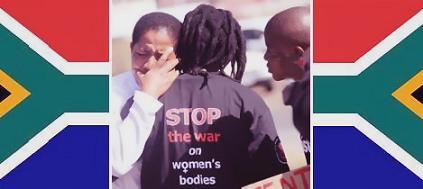The traffic in women (or sex trafficking, as it is usually called) has gained central attention in the humanitarian world of nonprofits and nongovernmental organizations. The emergence of sex trafficking as the ultimate humanitarian crisis has led to an uncritical, melodramatic discourse. Governmental and non-governmental organizational rhetoric posits women and children as the main protagonists in a tale of capture, rescue, and redemption. Slogans such as “Free the slaves,” “End slavery,” and the authenticity-promising “Sex trafficking through the eyes of survivors,” prod audiences to learn about human trafficking and embark on rescue campaigns, by donating to anti-trafficking causes or by founding anti-trafficking NGOs.
Human trafficking (sex trafficking included) is a serious problem. What is unrealistic and uncompassionate is anti-trafficking activists’ presentation of trafficking in a political and economic vacuum, and the resultant erasure of capitalist socioeconomics, including labor migration and trade globalization. The Asia Pacific Network of Sex Workers (APNSW) sums up the problem best: “Don’t talk to me about sewing machines. Talk to me about workers’ rights.” The slogan refers to the frequent brothel raids undertaken by western humanitarians, raids that result in the so-called rehabilitation of sex workers as employees in the textile industry. Rejecting their easy subsumption under the logic of capitalist accumulation, sex workers mobilize the language of rehab only to reinvest it with their own struggles as workers and women living in deeply racialized and inequitable local and global economies. The APNSW re-channels the trafficking conversation into debates about labor exploitation, in the process recognizing sex work as a legitimate part of the labor sector, as well as situating human trafficking in the broader context of work migration.
So who are the sex trafficked? According to most anti-trafficking activists, the story is simple: the sex trafficked are non-western women and children coming from poverty-stricken places and desperate to move west for a better life. Enter pimps, traffickers, and organized criminal groups who pry on desperation and poverty. The poster child of anti-trafficking campaigns is the naïve and innocent young woman or girl — unfamiliar with capitalist transactions and ignorant of the perils of immigration — beaten into prostitution, her body a living testimony to the cruelty and inhumanity of the sex industry. The reality of migration is messier and less straightforward. As scholars and activists Laura Augustín, Jo Doezema, Kamala Kempadoo, among others, have shown, women migrate for a variety of reasons (poverty being only one of them) and go through a variety of situations that rarely resemble the absolute captivity envisioned by mass media.
The easy equation of sex trafficking and sex work jeopardizes anti-trafficking initiatives. Sex workers, not anti-trafficking activists, are more successful at fighting forced prostitution. The Durbar Mahila Samanwaya Committee in Sonagachi, the largest red-light district in Kolkata, India, is a network of sex workers who take upon themselves to locate underage sex workers or those workers who are in the trade against their will. Committee’s success in removing sex workers forced into prostitution should represent a lesson for the anti-trafficking movement. Despite evidence to the contrary, however, anti-trafficking scholars and activists continue to discount sex workers as reliable allies in the fight against human trafficking.
The misguided conflation between trafficking and prostitution has had serious effects on AIDS prevention programs. The U.S. President’s Emergency Plan for AIDS Relief (PEPFAR requires all organizations that receive PEPFAR funding to oppose prostitution and trafficking, both seen as equally oppressive. This anti-prostitution pledge has had negative effects, such as forcing the closure of AIDS prevention programs geared towards sex workers. In 2013, the U.S. Supreme Court struck down the provision as unconstitutional.
Equally pernicious are the law enforcement and rescue paradigms that characterize current approaches to sex trafficking. In 2004, the U.S. Secretary of State, the Secretary of Homeland Security, and the Attorney General created the Human Smuggling and Trafficking Center (HSTC), a center that brings together officers and investigators from the FBI, CIA, and the Homeland Security to combat the traffic in women. The makeup of the Center mirrors the State Department’s punitive anti-immigration approach to human trafficking. The law enforcement approach relies on raids of red light districts and indiscriminate arrests of sex workers. The migrant women rescued during these raids have two options: return to their countries or testify against their so-called traffickers. Following the 2000 Trafficking Victims Protection Act, Section 103.8, women must also prove that they suffered “severe forms of trafficking” in order to qualify for the T-Visa that enables them to remain in the United States.
Returning to the APNSW, one is puzzled by the exclusion of issues of labor and migration. What would change if activists were to heed the APNSW slogan and consider the rights of women as workers in a globalized capitalist economy. What if anti-trafficking activists acknowledged the fight of migrant women and sex workers for decent work, respect, and social inclusion? While this alternative is unlikely to dominate the anti-trafficking community too soon, the prospect of a justice paradigm centered on labor and migration will continue to inspire migrant workers, sex workers, and their allies.
(Photo Credit: Twitter / Lela Who)
